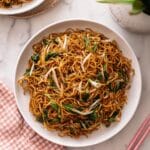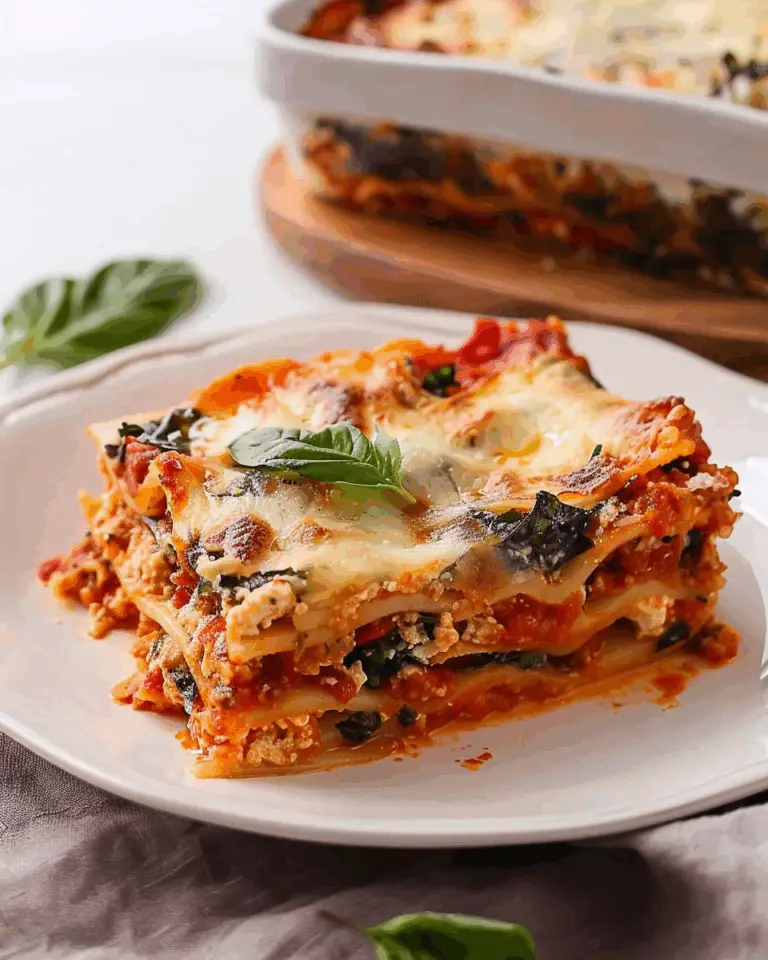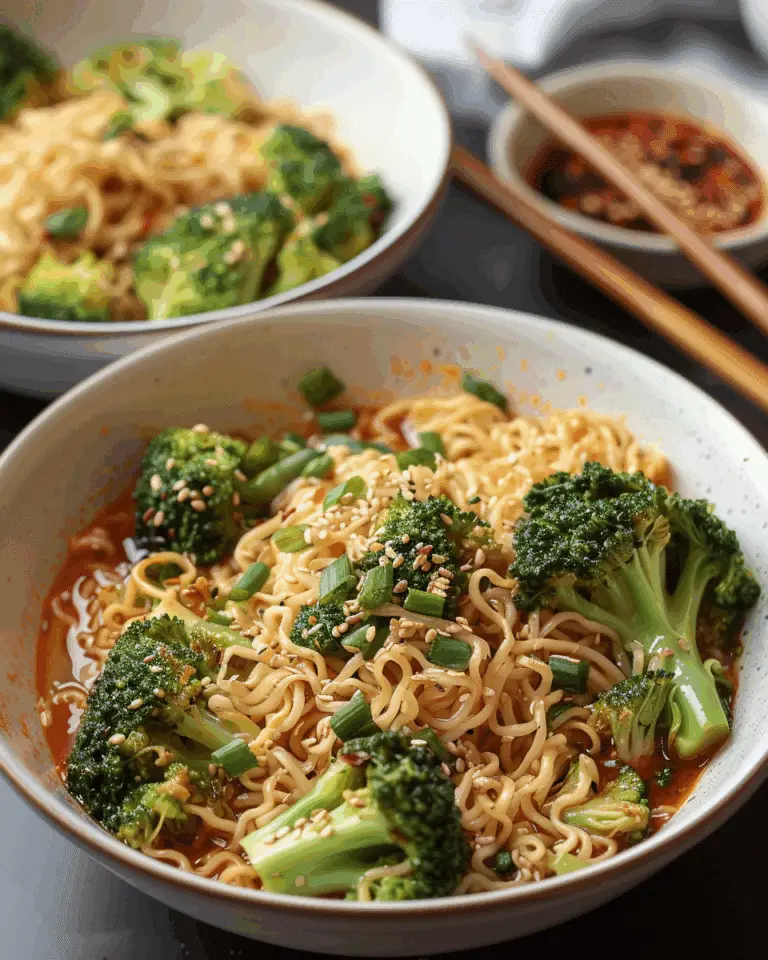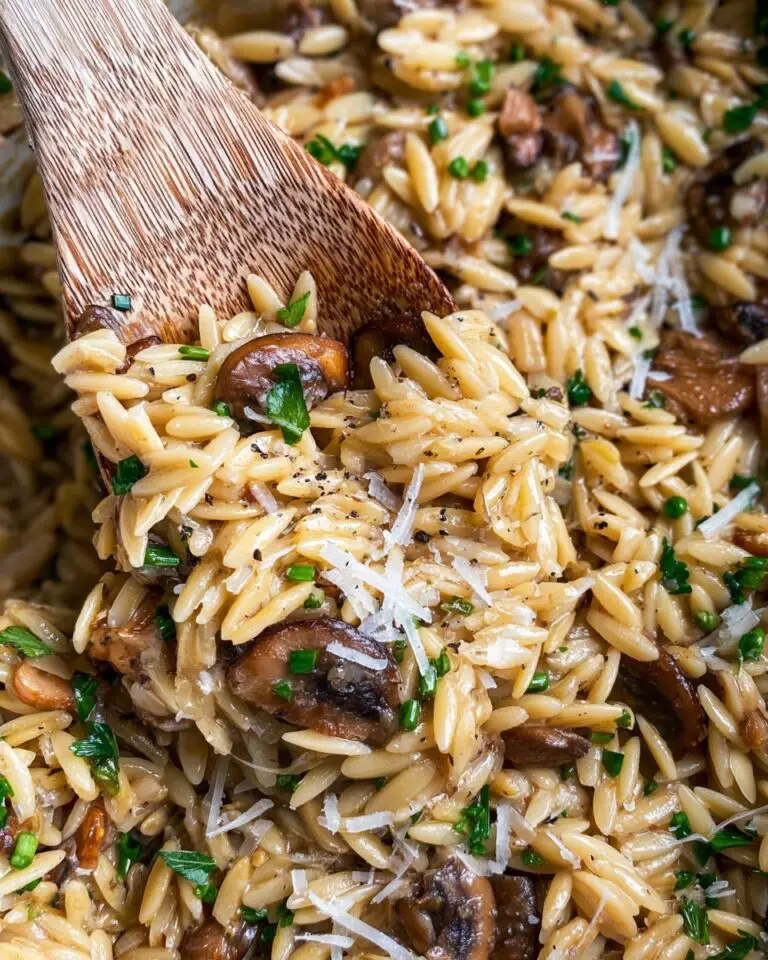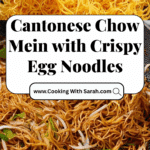If you’ve ever craved that perfect, crispy yet tender noodle dish that delights your taste buds with a symphony of savory flavors, then this Cantonese Chow Mein Recipe is your new best friend. It’s a mouthwatering blend of golden chow mein egg noodles, vibrant vegetables, and a luscious sauce that simply sings with every bite. Whether you’re making a quick weeknight dinner or entertaining friends, this classic Cantonese style chow mein will impress without fuss, bringing the authentic taste of Chinese cuisine right to your kitchen table.
Ingredients You’ll Need
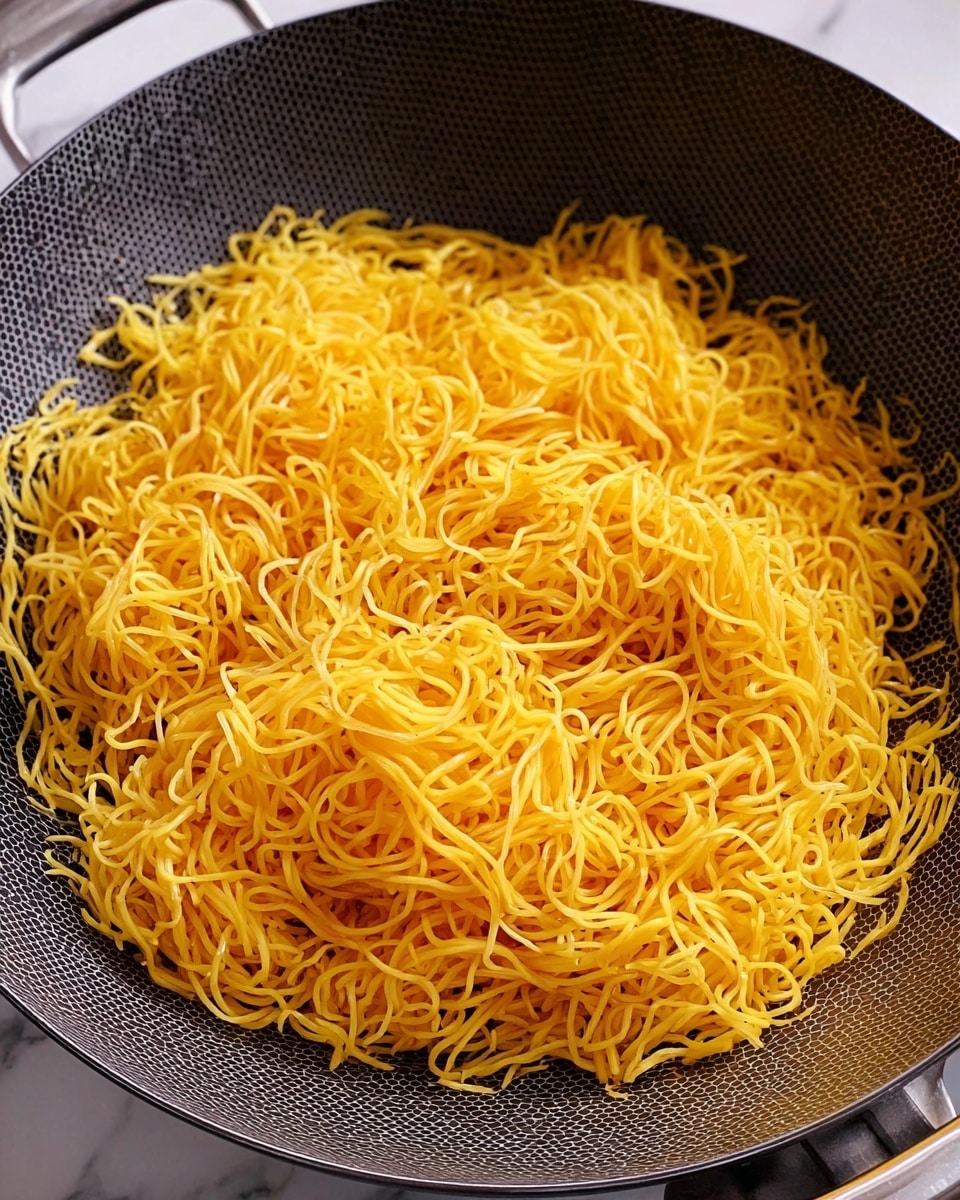
This Cantonese Chow Mein Recipe relies on a handful of simple, fresh ingredients that come together beautifully to deliver an explosion of flavor, texture, and color. Each component plays a vital role in balancing the dish’s savory richness and crisp freshness.
- 12 oz chow mein egg noodles thin fresh noodles, Hong-Kong style: The star of the dish with a perfect chewy yet crispy texture when pan-fried.
- ½ small yellow onion thinly sliced: Adds a gentle sweetness and depth.
- 5 stalks green onions cut into 2-inch pieces, whites and greens divided: Provides sharpness and a pop of green color.
- 2 cups bean sprouts: Brings a fresh crunch and lightness to every bite.
- 3 tablespoons corn oil or any neutral oil: For stir-frying and crisping the noodles.
- 1 teaspoon sesame oil to finish: Adds that signature nutty aroma and richness.
- Stir Fry Sauce Ingredients:
- 2 tablespoons dark soy sauce: Gives a deep umami flavor and rich color.
- 1 tablespoon regular soy sauce: Balances the sauce with saltiness and light umami.
- 1 tablespoon oyster sauce: Adds savory sweetness and complexity.
- ½ teaspoon fish sauce: Intensifies the fragrance and depth.
- 1 tablespoon granulated sugar: Softens and balances the savory notes.
- 1 tablespoon water: Brings the sauce to the perfect consistency.
How to Make Cantonese Chow Mein Recipe
Step 1: Prepare the Noodles
Start by pouring boiling water over your fresh chow mein egg noodles to soften them just right. Soak them for about 30 seconds to 1 minute until they are pliable but not mushy. Then, drain and set aside while you prep the rest. This quick soak preserves that essential chewy texture that makes this Cantonese Chow Mein Recipe stand out.
Step 2: Mix the Stir Fry Sauce
In a small bowl, blend together the dark soy sauce, regular soy sauce, oyster sauce, fish sauce, granulated sugar, and water. Stir until the sugar fully dissolves, creating a perfectly balanced sauce that will coat every strand of noodle with rich, complex flavor.
Step 3: Sauté the Aromatics
Heat one tablespoon of corn oil in a wok over medium-high heat until shimmering hot. Toss in the thinly sliced yellow onion along with the white parts of the green onions. Stir-fry for about one minute to bring out their sweetness and fragrance, then remove them from the wok and set aside. These aromatics will infuse the dish with a delicate yet essential base flavor.
Step 4: Pan-Fry the Noodles
Return the wok to the heat, adding another tablespoon of corn oil and letting it heat well. Spread the noodles out evenly in the wok to create a thin layer. Let them crisp up for about 2 minutes without disturbing them — this step is crucial for that delightful Cantonese style chow mein texture. Flip the noodles, drizzle one tablespoon of oil around the edges, and cook for another 2 minutes until beautifully golden and crispy on both sides.
Step 5: Combine Vegetables and Sauce
Add the sautéed onions back into the wok along with both the green and white parts of the green onions, the crunchy bean sprouts, and the stir fry sauce. Gently toss and mix everything to coat the noodles and vegetables evenly. Cook for another 1 to 2 minutes so the flavors meld perfectly. Taste and adjust seasoning if needed before removing from the heat.
Step 6: Finish with Sesame Oil
Just before serving, drizzle in the fragrant sesame oil and give the chow mein a final toss. This finishing touch never fails to elevate the dish with its irresistible aroma and richness, marking the final step in crafting this Cantonese Chow Mein Recipe.
How to Serve Cantonese Chow Mein Recipe
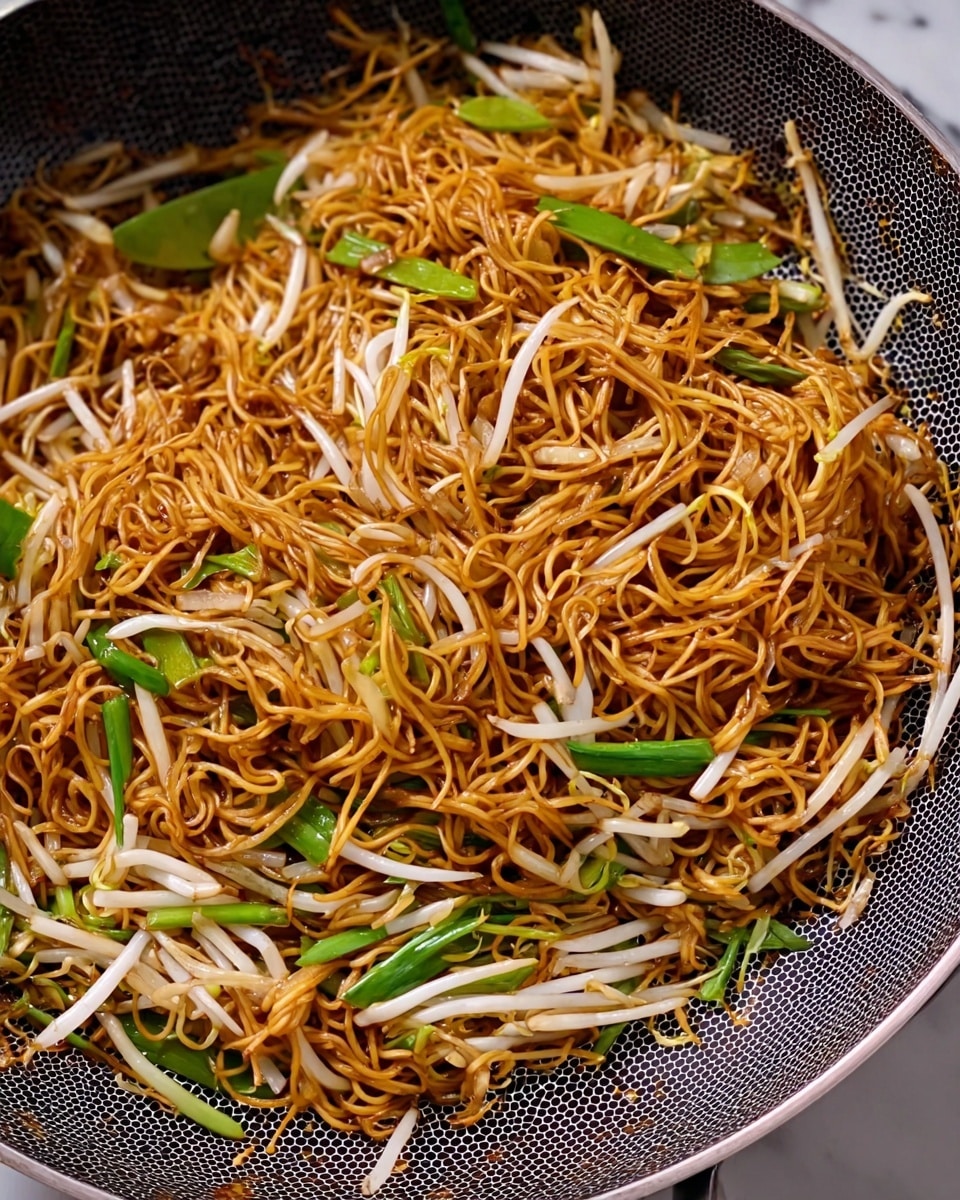
Garnishes
While the dish is delicious on its own, adding a few fresh garnishes can take it to the next level. Sprinkle chopped fresh cilantro or a pinch of toasted sesame seeds for an earthy crunch. A wedge of lime on the side adds a zingy contrast that brightens the meal perfectly.
Side Dishes
Pair your Cantonese Chow Mein Recipe with light and complementary sides like steamed dumplings, a crisp cucumber salad, or a bowl of hot and sour soup to round out the meal beautifully. These help balance the comforting richness of the noodles while providing textural variety.
Creative Ways to Present
For a fun twist, serve the chow mein in individual lettuce cups or crispy wonton shells for bite-sized delights at a party. Another idea is to add thinly sliced cooked chicken or shrimp on top for an elegant presentation and extra protein boost.
Make Ahead and Storage
Storing Leftovers
If you have any leftovers of this Cantonese Chow Mein Recipe, allow them to cool completely before transferring to an airtight container. Keep refrigerated for up to 3 days. The noodles will hold their texture surprisingly well if stored properly, making for a quick and satisfying next-day meal.
Freezing
Freezing is not recommended for this dish because the crispy texture of the noodles tends to soften upon thawing, which takes away from the authentic Cantonese style. For best results, enjoy fresh or refrigerated leftovers.
Reheating
To reheat, warm a little oil in a hot pan or wok and quickly stir-fry the noodles until heated through and regain some crispness. Avoid microwaving if possible, as this can make the noodles soggy and limp — something we definitely do not want in this Cantonese Chow Mein Recipe.
FAQs
Can I use dried noodles instead of fresh chow mein egg noodles?
While fresh noodles are ideal for that perfect texture, you can use dried chow mein egg noodles. Just remember to boil them according to the package instructions and drain well to avoid sogginess when stir-frying.
What can I substitute for bean sprouts if I can’t find them?
If bean sprouts are not available, shredded cabbage or thinly sliced bok choy make great substitutes, offering crunch and freshness similar to sprouts.
Is oyster sauce necessary in the stir fry sauce?
Oyster sauce adds a unique savory sweetness that’s hard to replicate; however, vegetarian stir-fry sauce alternatives can be used if you need a substitute, like mushroom soy sauce.
How do I make the noodles extra crispy?
Make sure your wok or pan is sufficiently hot and spread the noodles out in a thin layer without stirring them initially. Let them cook undisturbed for a couple of minutes before flipping to get that signature crispy texture.
Can I add meat or tofu to this Cantonese Chow Mein Recipe?
Absolutely! Thinly sliced chicken, shrimp, beef, or firm tofu can be stir-fried with the aromatics before adding the noodles for a heartier, protein-packed meal.
Final Thoughts
This Cantonese Chow Mein Recipe is a delightful celebration of textures and flavors that’s surprisingly quick to make, yet so satisfying. Once you master its crispy noodles and savory sauce, it’s sure to become a staple in your cooking rotation. So don’t hesitate—gather your ingredients, fire up your wok, and dive into the wonderful world of homemade Cantonese style chow mein. Your taste buds will thank you endlessly!
PrintCantonese Chow Mein Recipe
This Cantonese Chow Mein recipe features thin fresh Hong-Kong style egg noodles stir-fried to a perfect crisp texture with aromatic onions, crunchy bean sprouts, and a flavorful mix of soy and oyster sauce. Quick to prepare, it combines delicious textures and savory flavors, perfect for a satisfying lunch, dinner, or even breakfast.
- Prep Time: 5 minutes
- Cook Time: 10 minutes
- Total Time: 15 minutes
- Yield: 2 servings
- Category: Lunch, Dinner, Breakfast
- Method: Stovetop
- Cuisine: Chinese
Ingredients
Noodles
- 12 oz chow mein egg noodles (thin fresh noodles, Hong-Kong style)
Vegetables
- ½ small yellow onion, thinly sliced
- 5 stalks green onions, cut into 2-inch pieces (whites and greens divided)
- 2 cups bean sprouts
Oils
- 3 tablespoons corn oil (or any neutral oil)
- 1 teaspoon sesame oil (to finish)
Stir Fry Sauce
- 2 tablespoons dark soy sauce
- 1 tablespoon regular soy sauce
- 1 tablespoon oyster sauce
- ½ teaspoon fish sauce
- 1 tablespoon granulated sugar
- 1 tablespoon water
Instructions
- Cook the noodles: Pour boiling water over the noodles and soak for 30 seconds to 1 minute until softened. Drain thoroughly and set aside.
- Make the sauce: In a small bowl, combine dark soy sauce, regular soy sauce, oyster sauce, fish sauce, sugar, and water. Stir until the sugar dissolves completely.
- Sauté aromatics: Heat 1 tablespoon of corn oil in a wok over medium-high heat until hot. Add the yellow onions and the white parts of the green onions. Stir-fry for about 1 minute until fragrant and slightly softened. Remove from wok and set aside.
- Pan-fry the noodles: Add another tablespoon of corn oil to the wok and heat over medium-high heat for about 2 minutes. Add the noodles and spread them out into a thin layer. Let them cook undisturbed for about 2 minutes to get crispy on one side. Flip the noodles over, drizzle the last tablespoon of oil around the wok perimeter, and cook for another 2 minutes until crisped on the other side.
- Add vegetables and sauce: Return the sautéed onions, add the green parts of the green onions, bean sprouts, and pour in the prepared stir-fry sauce. Gently toss and stir for 1-2 minutes until everything is well combined and heated through. Taste and adjust seasoning if necessary.
- Serve: Remove the wok from heat, drizzle sesame oil over the noodles, and toss to coat evenly. Serve immediately while hot and enjoy.
Notes
- Use fresh Hong-Kong style chow mein egg noodles for the best texture and authenticity.
- Be sure to crisp the noodles well on both sides to achieve the iconic chow mein texture.
- You can adjust the soy sauce quantities depending on your salt preference.
- Adding a splash of fish sauce enhances the umami flavor, but it can be omitted for a milder taste.
- Use a wok or a large skillet to ensure quick, even cooking and good heat distribution.

